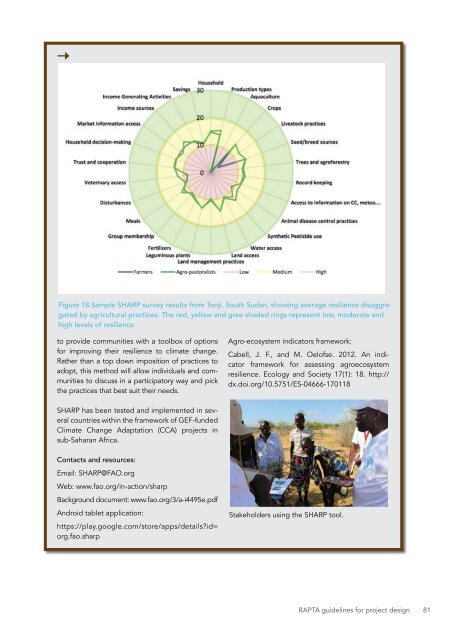DESIGNING PROJECTS IN A RAPIDLY CHANGING WORLD
srun3013fp1
srun3013fp1
Create successful ePaper yourself
Turn your PDF publications into a flip-book with our unique Google optimized e-Paper software.
Figure 18 Sample SHARP survey results from Tonji, South Sudan, showing average resilience disaggregated<br />
by agricultural practices. The red, yellow and gree shaded rings represent low, moderate and<br />
high levels of resilience<br />
to provide communities with a toolbox of options<br />
for improving their resilience to climate change.<br />
Rather than a top down imposition of practices to<br />
adopt, this method will allow individuals and communities<br />
to discuss in a participatory way and pick<br />
the practices that best suit their needs.<br />
Agro-ecosystem indicators framework:<br />
Cabell, J. F., and M. Oelofse. 2012. An indicator<br />
framework for assessing agroecosystem<br />
resilience. Ecology and Society 17(1): 18. http://<br />
dx.doi.org/10.5751/ES-04666-170118<br />
SHARP has been tested and implemented in several<br />
countries within the framework of GEF-funded<br />
Climate Change Adaptation (CCA) projects in<br />
sub-Saharan Africa.<br />
Contacts and resources:<br />
Email: SHARP@FAO.org<br />
Web: www.fao.org/in-action/sharp<br />
Background document: www.fao.org/3/a-i4495e.pdf<br />
Android tablet application:<br />
https://play.google.com/store/apps/details?id=<br />
org.fao.sharp<br />
Stakeholders using the SHARP tool.<br />
RAPTA guidelines for project design 81


